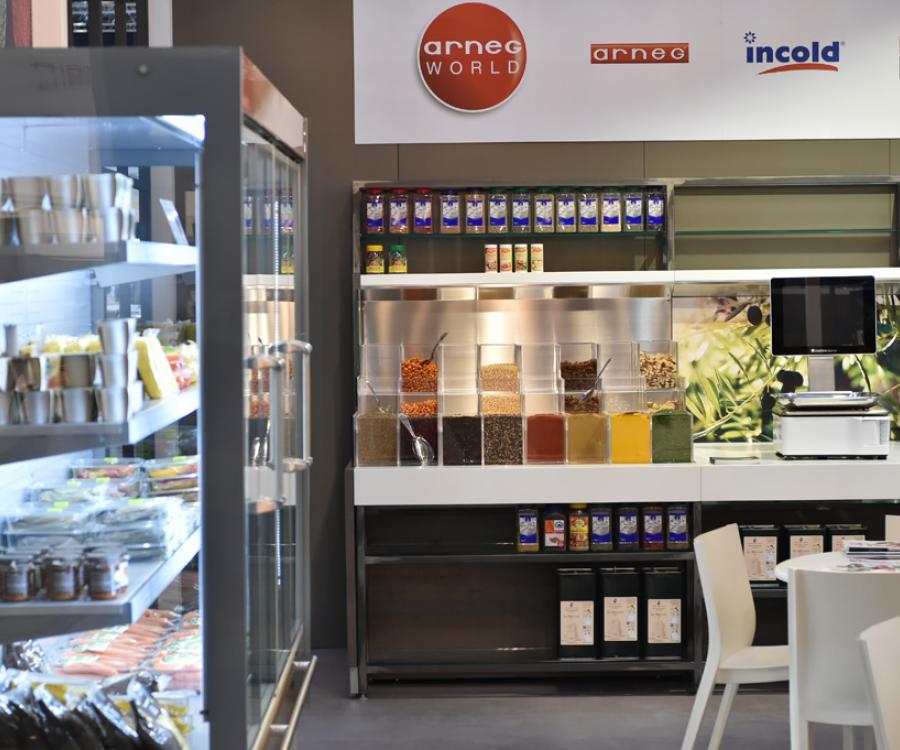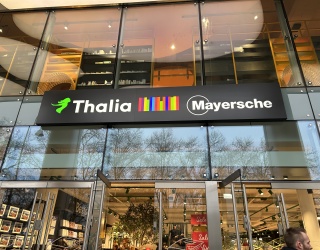Sustainable refrigeration concepts are more important than ever and especially since measures to reduce extremely harmful coolants that accelerate the greenhouse effect have been initiated at the EU level. This means that food retailers, in particular, also need to address this subject matter. To help them with this task, the University of Birmingham has published the white paper titled “Refrigeration in Retail – Transition to Clean Cold” in collaboration with cooling expert Emerson.
In this joint interview, Professor Toby Peters, Professor for Power and Cold Economy at the University of Birmingham, UK and Eric Winandy, Director of Integrated Solutions/Direktor Integrierte Lösungen at Emerson highlight the urgency of this subject and give advice to retailers.
Mr. Winandy, what type of cooling technology should a retailer prefer?
Eric Winandy, Director of Integrated Solutions, Emerson: There’s no one size fits all solution to natural refrigeration, and different systems will suit different retailers. The important thing is that retailers adopt a holistic approach to their refrigerant decisions, considering not only upfront costs, but the resources needed to maintain different technologies over a longer period of time. CO2 systems, for example, are most efficient in colder climates, such as the Scandinavian countries they originate from. However, industry analysis suggests that often hydrocarbons such as propane can offer significantly more benefits in terms of energy efficiency and maintenance costs over time. This is because they support a much less complex system compared to CO2.

What are the advantages of alternative solutions, Professor Peters?
Professor Toby Peters, University of Birmingham: Supermarkets have a once in a lifetime opportunity to develop refrigeration strategies that simultaneously advance business and environmental goals. Strategic choices about system architecture can enable food retailers to reduce their internal costs of heating and hot water as well as refrigeration. It also can open up opportunities for deeper integration with local energy networks. Supermarkets can make use of negatively-priced excess renewable power, or develop new revenue streams by providing waste heat – or excess cold – to district heating networks, while at the same time supporting three internationally agreed goals: the Paris Climate Agreement; the Montreal Protocol’s Kigali Amendment; and the Sustainable Development Goals.
Do I have to use the new refrigerants as a retailer from a legal point of view?
Toby Peters: EU legislation has so far been directed more at manufacturers than at retailers. At the moment, it is not illegal to use HFCs, but EU F-gas Regulation means the supply is falling quickly. In 2018 the HFC supply in Europe will effectively fall to 48 percent below its level in 2015. It will be cut by almost 80 percent by 2030, forcing retailers to move away from using HFC models.
How expensive are the environmentally friendly coolants in comparison to the common coolants?
Eric Winandy: It’s less about initial expense and more about long term value, as there is more disparity in maintenance costs than in the initial price of installing the systems. However, if the right natural alternative is chosen, retailers could make very real savings in terms of both efficiency and maintenance. For example, recent industry analysis found a Supermarket chain could save up to 51,000 euros per store over a ten-year period with a propane integral system, compared to a CO2 system.
I imagine that many retailers will be very shocked to hear that their refrigerators are not as environmentally friendly as they have probably assumed. Is there any support or information from the state or scientific community for them?
Eric Winandy: I hope that by now, it isn’t surprising to retailers that their refrigeration systems could be more environmentally sustainable. In fact, we have been encouraged to find that the industry seems to agree that natural refrigerants are the best replacement to HFCs, rather than a stop-gap compromise which could face similar phase-out regulation in a few years’ time. But certainly, there is support available from the cooling industry. Part of the reason we developed this whitepaper was to raise awareness and inform retailers about the phase-down, along with the natural alternatives available

If a retailer wants to equip his supermarket with new refrigerators, how can he start his approach?
Eric Winandy: The most important first step is to do some thorough research about the alternative technologies available and their performance over a long-term period. Find out the maintenance costs of migrating to a complex CO2 system, for example, and then weigh that up with the potential benefits of installing self-contained hydrocarbon units that use propane. Refrigeration units installed today will be in service for the next 15 years, so it is crucial that retailers understand the long-term implications of their decisions.
Professor Peters, how long will it take to establish these opportunities in retail?
Professor Toby Peters: While many retailers have started the transition from HFCs to alternative refrigerants, industry reports indicate the industry is falling behind. The HFC supply will be reduced up to 80 percent in Europe by 2030, but hopefully most retailers will have made the transition by then.
The main challenge though is to recognize that a large part of energy consumption comes in the form of thermal services and that cooling - and indeed heating. If cooling is to be sustainable, we don’t simply need more efficient fridges, but a fundamental overhaul of system architecture. As such, Governments must start providing more incentives and invest in research and development to help speed up this process, not simply green electricity.






